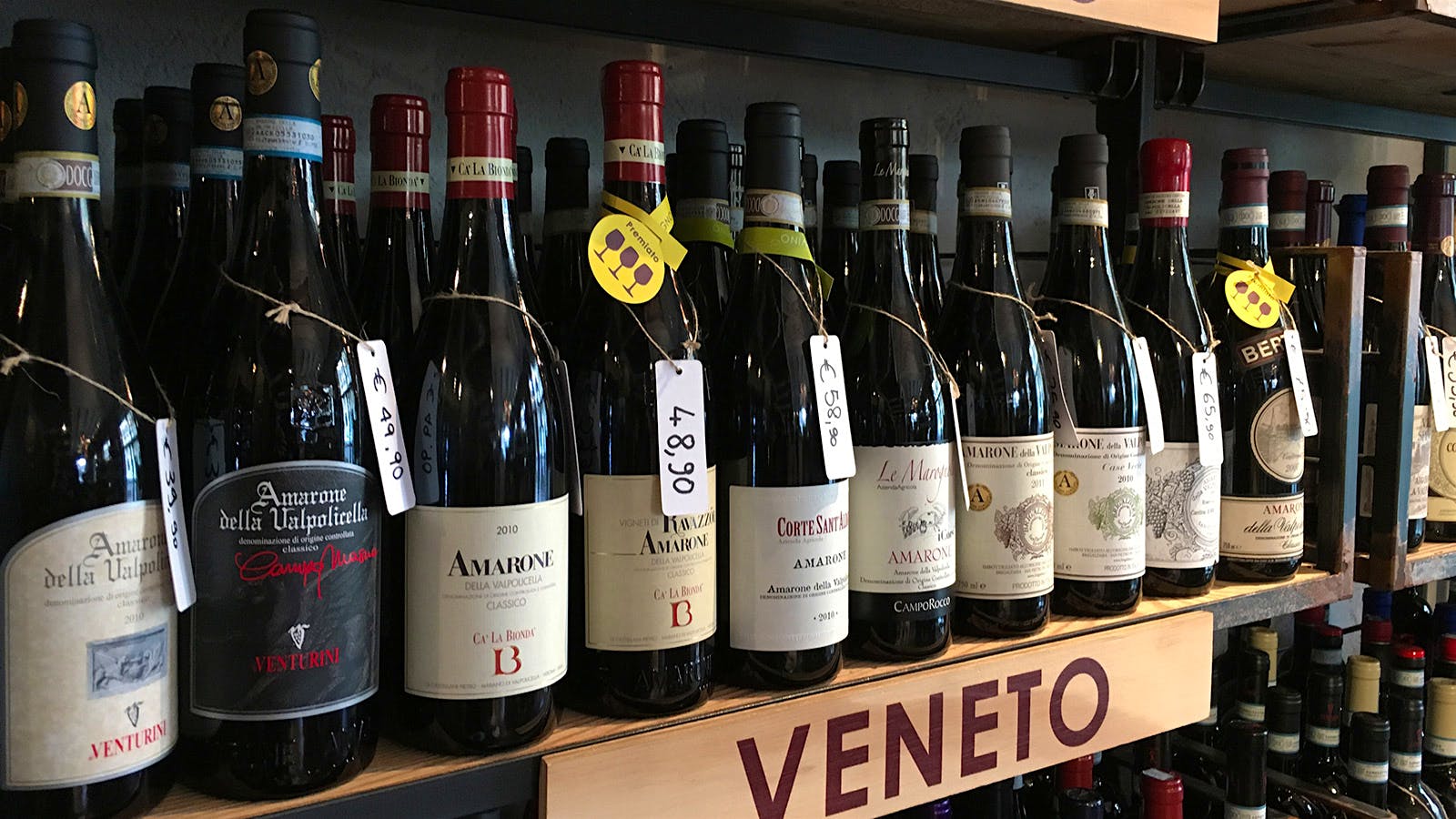“What’s in a name?” Shakespeare’s tragic-romantic heroine Juliet lamented, mournfully questioning the Verona family feuds that kept her from her Romeo.
Now, centuries later, the families of Verona are embroiled in another drama over a name: Amarone della Valpolicella.
The conflict began in 2009, when 12 longtime Amarone producers, led by Masi patriarch Sandro Boscaini, banded together to create a new elite confederation called Amarone Families (Famiglie Dell’Amarone d’Arte).
The Amarone Families—Allegrini, Begali, Brigaldara, Guerrieri Rizzardi, Masi, Musella, Speri, Tedeschi, Tenuta Sant’Antonio, Tommasi, Venturini and Zenato—signed a manifesto calling for voluntary higher production standards and creating a hologram sticker to identify their wines.
The effort aimed to distinguish their wines from what they considered lower-quality, supermarket versions of Amarone—the intense, dry red wine made through partially drying the local Corvina, Rondinella and, optionally, Molinara grapes. (This appassimento process is also used to make Recioto, Valpolicella's traditional sweet wines.)
“The idea was to communicate that Amarone should be a wine of exclusivity, not a mass-market wine,” says Boscaini, 77, looking over the vineyards in Sant’Ambrogio di Valpolicella that his family has cultivated since the 18th century—long before Amarone began to be made and sold commercially in the 20th century.
The problem is that the Valpolicella Consortium controls use of the Amarone name. Some members were angered by what they saw as a small group designating themselves as the Amarone elite.
“Three years ago, we asked them to stop using the Amarone name, They didn’t want to do it,” says Christian Marchesini, 43, a grower in San Pietro in Cariano and president of the Valpolicella Consortium, which represents more than 2,200 growers, wineries and bottlers.
In June 2015, the consortium sued to stop the group from using the name. The 10 Amarone Families wineries that were still part of the consortium then quit. Positions hardened. A judge in Venice is expected to deliver a verdict later this year.
“The problem is they used the word 'Amarone,' which is a registered trademark,” says consortium executive board member Celestino Gaspari, 53, the former winemaker for his legendary late father-in-law, Giuseppe Quintarelli, a wine consultant and founder of Zymé winery. “If they called their group something like the 'Families of the Golden Grapes,' it would not be a problem. But Amarone is the patrimony of all the producers, and we must defend it.”
The dispute is a very Italian one—highlighting the broad differences among wines and flaws in the country's classification system. It is fueled by an Amarone boom, from 500,000 cases produced in 2000 to more than 1.3 million in the 2012 vintage, according to the consortium.
Boscaini, whose 2011 biography was titled Mister Amarone, and who disassociated Masi from the consortium more than 20 years ago, argues that the Amarone Families have the right to the name.
“Famiglie dell'Amarone d'Arte is the name of a group of producers of Amarone who share a vision of what Amarone means,” he says. “Since they all have a perfect right to promote themselves individually as producers of Amarone, why are they not allowed to do so as a group?”
The current president of Amarone Families, Marilisa Allegrini of Allegrini, defends the group as necessary to uphold Amarone’s image. “The reputation of Amarone has been threatened by overproduction of poor-quality wine, put on the market at ridiculously low prices so as to cash in on Amarone’s reputation,” she says.
“Unfortunately, we have found ourselves in a situation in which the controlling bodies are not as interested as we are in protecting the image of Amarone,” Allegrini adds. “For them, it has almost become synonymous with a commodity.”
By the 2010 DOCG rules, grapes for Amarone are supposed to be dried for at least 100 to 120 days until they lose at least half their weight through evaporation. (Typically, producers cannot crush until at least December 1, though the consortium can authorize earlier dates, as it did in the hot 2015 vintage.) After vinification, wines must be aged at least two years in barrel prior to release.
The Amarone Families manifesto is a general call—without specifics or policing—for adhering to artisanal methods such as “precise bunch selection during harvesting,” “prolonged drying” and aging in “high-quality barrels.”
Allegrini says that the group operates as a “gentleman’s agreement” to go beyond the appellation's minimum requirements, and that group members dry their grapes for long periods—often well into January—to achieve more concentrated wines. She also says that now the group is considering applications from other producers, including younger and smaller ones “that share our values and worries.”
Gaspari reflects the view of many producers who believe the conflict has turned into a “soap opera” that itself could hurt Amarone.
“[Amarone Families] declare they are the best producers of Amarone, but it’s not true,” he says. “Quintarelli is not part of the group. Nor is Bertani nor Dal Forno. … It creates confusion in the market because of this stupid competition between the producers.”












